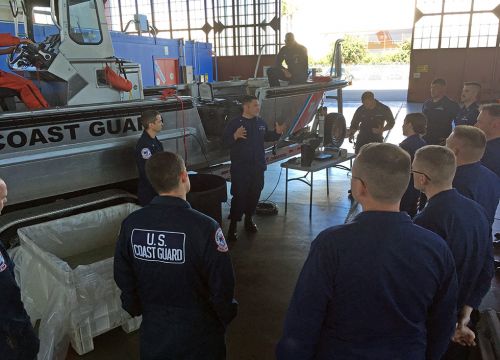Coast Guard Advanced Environmental Response Training in California
MARCH 31, 2017 -- This week, U.S. Coast Guard’s Pacific Strike Team hosted roughly 30 spill-experienced Coast Guard officers and enlisted personnel from across the Pacific basin for a three-day advanced training workshop on a variety of spill response topics, involving both classroom and hands-on activities.
The strike team is one of three rapid-deployment teams standing ready to provide oil spill and hazardous material response capabilities (equipment & highly trained personnel) to Coast Guard and Environmental Protection Agency responders during emergencies.
NOAA’s Emergency Response Division was prominently featured in the training, covering response topics like weather forecasting, trajectory modeling, mapping applications like NOAA’s Environmental Response Management Application, NOAA’s Remediation of Legacy Environmental Threats (RULET) initiative identifying, and prioritizing potentially polluting shipwrecks, aerial observation training and assisting in demonstrations of chemical dispersant effectiveness monitoring techniques.
The course provides important, in-depth knowledge to Coast Guard responders stationed across the Pacific Ocean so they can better utilize the knowledge, tools and expertise available to them when problems arise.
For further information, contact Jordan.Stout@noaa.gov.
Go back to OR&R Weekly Report.

